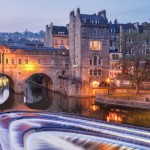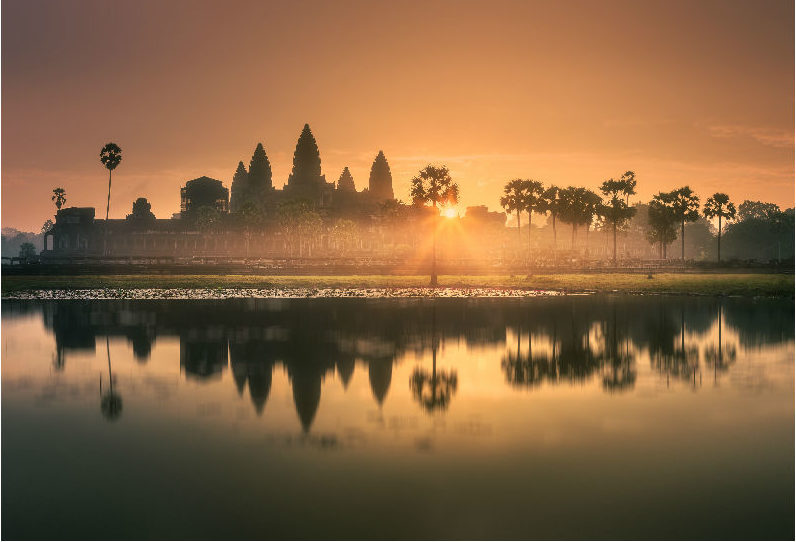
At a mention of Cambodia, perhaps the first thing that springs to mind is the celebrated Angkor Wat, the world’s largest religious monument, which forms part of the Angkor Temple complex, a UNESCO World Heritage Site. However, if you’re of a certain age, perhaps your thoughts may be of the radical communist, Khmer Rouge, who under the leadership of Pol Pot, took the country on a path of self-destruction, resulting in eventual mass genocide, between 1975 and 1979. For many local people, painful memories still endure of Pol Pot’s time in power.
However, modern-day Cambodia is now benefitting from two decades of relative stability, albeit under an autocratic, corrupt government. Consequently, it still ranks as one of the world’s poorest countries, where there are many people who are just about getting by.
The main-stay of the economy is the garment industry, but with identified offshore oil and gas reserves, there is some room for optimism over the nation’s economic future. Meanwhile, the country’s rich cultural history, turbulent recent past and the polite, warm, smiling Khmer people themselves, are just some of the reasons why travellers are arriving in increasing numbers to the kingdom, giving ever increasing importance to its tourist industry.
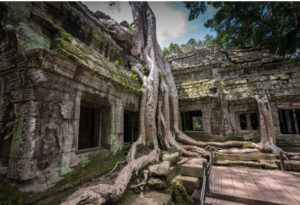
Recently, significant changes to the country’s landscape, infrastructure and demographics have been triggered, largely due to major investment from Korea, Japan and especially China. So, if you’ve ever thought about going to Cambodia, now would be a good time.
Getting around – planes, trains and automobiles
Airports and planes
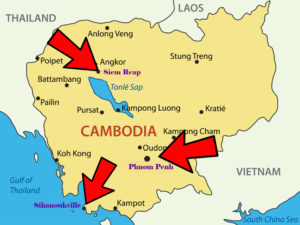
Cambodia currently has three international ports in the country’s main tourist destinations of Phnom Penh, Siem Reap and Sihanoukville. While there are a number of domestic airports spread throughout the country, presently there are only commercial flights available from its international airports.
You can fly to both Phnom Penh and Siem Reap from multiple destinations in China, Japan and most ASEAN countries, including Thailand and Singapore. Emirates and Qatar Airways also fly to Phnom Penh directly from the Middle East. Currently you can only fly to Sihanoukville from China, Malaysia or Vietnam. Domestically, you have the option to fly any of the routes between Phnom Penh, Siem Reap and Sihanoukville.
There are at least 6 or 7 providers flying between Bangkok and Phnom Penh, operating out of both Survarnabhumi (BKK) and Don Muaeng (DMK) Airports. If your travels take you back to Bangkok, there is no real advantage in booking a return flight other than convenience. Thus, booking a single flight with one airline and returning on another usually offers greater flexibility. Fares vary quite markedly depending on how far ahead you book, the month, what day and what time you travel. For a good deal expect to pay in the region of 100 USD each way. I’ve found the best deals to be had are usually on the company’s own website. The flight time is approximately 70 minutes.
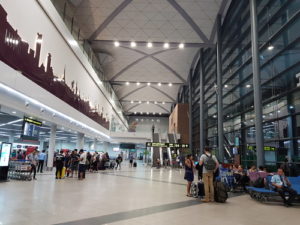
Trains
After many years without any train facility in Cambodia there is now at least a fledgling scheduled service emerging. There are currently only two lines in operation, Phnom Penh to the coastal town of Sihanoukville in the south, and Phnom Penh to the Thai border town of Poipet, in the west. However, if you happen to be in a hurry to get your journey’s end it would be advisable to find another mode of transport. As in most of South East Asia, train journeys in Cambodia are very slow but usually a pleasurable experience.
The weekly service to Sihanoukville consists of one train on Fridays, one on Saturdays and two on Sundays. Similarly, for the return journey, there is one train on Saturdays, two on Sundays, and a further train on Mondays. The scheduled journey time is 7 hours and costs 8 USD. The train also stops at the coastal town of Kampot along the way, taking 5 hours 40 mins and costing 7 USD from Phnom Penh. Currently, only the Saturday trains have air conditioning.
The 410 km journey between Phnom Penh and Poipet takes 15 hours, there being 18 stops along the way. There is only one train that runs every other day between the capital and Poipet, and vice versa. The good news is that the service is free for passengers up to the end of 2018.
The only other train service in the country is a shuttle run between Phnom Penh’s main station to the airport, which runs every 30 minutes.
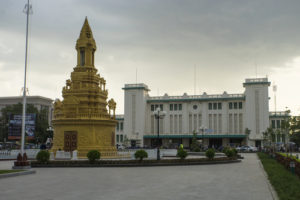
Buses
Buses are the preferred form of inter-provincial transportation in Cambodia. Regularly scheduled a/c buses run between most major cities, with Phnom Penh serving as the country’s transportation hub. The main road network is ordinarily in good condition, though there is construction in some areas. More than a dozen bus companies offer regularly scheduled buses from Phnom Penh to all major towns as well as Ho Chi Minh City and Bangkok. There are also night buses between the most popular tourist destinations, though they have questionable safety records.
All buses have a/c and are fairly comfortable, but cheaper buses are often the oldest, make extra stops and are more liable to break down. Deluxe buses are the most expensive but offer a higher standard of service, safety and are popular with travellers and locals alike. Mekong Express and Giant Ibis are the main operators of deluxe buses, running services from Phnom Penh to Siem Reap, Sihanoukville, Kampot and HCMC. The price of a Deluxe bus for the 4 hours popular journey to Sihanoukville would be 11–13 USD, a regular bus 7–10 USD and a mini-bus 7-8 USD. Some bus companies, especially in the main tourist areas, offer free pick-up from your hotel.
Funny Money
Currency
Cambodia operates a dual currency system. The official local currency is the Riel but the de-facto currency is the USD. Prices at hotels, shops and restaurants, in major towns and tourist areas are normally quoted in USD. Thus, you don’t need bring any local currency to Cambodia.
The exchange rate between the Riel and the USD is fixed around 4,000 Riel to 1 USD. Both the Riel and USD are accepted just about everywhere. However, Riel is usually only accepted in bona fide rural areas and perhaps small denomination USD banknotes (say 10 USD and below). For small cash transactions, if you pay in USD you will usually receive change in Riel.
Riel banknotes are issued in denominations of 50, 100, 500, 1,000, 2,000, 5,000, 10,000, 20,000, 50,000 and 100,000. Official currency also includes 50, 100, 200 and 500 Riel coins but they are seldom used. Similarly, 50,000 and 100,000 banknotes are not normally seen in use either.
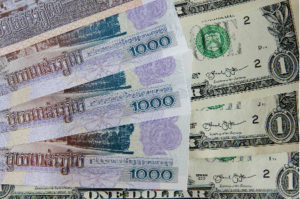
Currency Exchange
You should be able to exchange all the recognised major currencies to US dollars at any bank in Cambodia but you will be charged 2% commission. If you need to change money at the airport you will receive a somewhat poorer rate than the downtown. In town, you will probably get a better exchange rate at a money changer’s shop rather than a bank, but you’ll need to be a little more cautious.
Incidents of counterfeit USD notes being in general circulation in Cambodia have been reported over many years. Thus, it’s obviously worth giving USD banknotes you receive when exchanging money a quick check for legitimacy. You may not be able to spend damaged or defaced USD banknotes. Banks and money exchange shops will sometimes replace damaged notes but will charge a small fee for the service. Conversely, Riel found in any state or condition is usually accepted everywhere without question.
ATM’s, Bank Cards and Traveller’s Cheques
ATM’s that accept foreign credit and debit cards dispense cash in denominations of USD. They can be found in Phnom Penh, Sihanoukville and Siem Reap and in some other major towns. However, Cambodian ATM’s and banks will not accept all foreign debit and credit cards so it’s obviously worth checking with your card provider before you travel. And while Visa and Mastercard are widely accept, American Express isn’t.
There were no ATM charges in Cambodia until quite recently, I understand the usual fee can vary between 3 and 6 USD per transaction. The fee on a cash withdrawal at a bank usually incurs a 2% commission charge.
Credit cards are gradually becoming more widely accepted throughout Cambodia. Many hotels, large restaurants and tourist orientated businesses in the larger towns and cities will now take them. However, traveller’s cheques can generally only be exchanged at banks and maybe some money exchange shops in the larger municipalities.
Climate – when to go?
Cambodia has a hot tropical climate consisting of three seasons i.e. the hot season, which runs March to May, the rainy season; June to November, and the cool season; December to February. The country is relatively small and has a consistent, flat topography throughout, with the exception of a few highland areas, notably the Cardamon Mountains that run along part of the Thailand border. Accordingly, the climate is more or less uniform throughout all populated centres.
In the capital, Phnom Penh, the daytime temperature is around 30 °C (86 °F) in the coolest months, November and December. Temperatures usually begin to rise gradually in late January. The highest values are reached in April and May, with an average of 35 °C (95 °F). Daytime peaks can typically reach an oppressive 40 °C (104 °F). Temperatures then begin to decrease a little during the long rainy season but the humidity is higher, so the weather generally turns hot and muggy. In general, mean temperatures tend to be a little lower elsewhere in the country, especially noticeable along the coastal region.
There is little rainfall during the dry season in and around Phnom Penh. The wettest months are September and October, when it typical rains two days in every three. However, downpours are normally high intensity but short duration (typically an hour or less) and generally occur the same time every day i.e. in the afternoon. While its usually overcast before a cloudburst, a few hours of sunshine will typically follow. Flooding can occur in Phnom Penh but the situation has greatly improved since a new drainage system for the city was installed some 10 years ago.
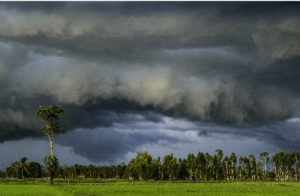
At Sihanoukville and the south coast region, the wettest month is July and August, where rain most days can be expected. The area can be prone to flooding during any prolonged bouts of rainfall. In essence, Cambodia is at its most temperate during December and January, when it is dry, and humidity is low. Thus, if you are planning an activity-based holiday such as hiking or cycling, then perhaps it’s the best time to visit. However, not unsurprisingly this period coincides with peak tourist season so expect to pay more for accommodation and the like. However, the rainy season is usually not too onerous and also be a great time to visit, since tourist numbers and prices are down.
Accommodation – where to stay?
Like most of South East Asia, Cambodia offers a full scope of accommodation for the traveller, ranging from modest hostels trough to luxury resorts. In Phnom Penh, Siem Reap and Sihanoukville there is plenty of accommodation in all categories. In smaller towns you can at least expect to find a reasonable quality guesthouse or a modest hotel.
Moving with the times, it’s now obviously best to check things out online for the opportunity of securing a good accommodation deal. However, if you haven’t booked in advance, finding somewhere to stay in Cambodia is seldom a problem. Though, rooms can become scarce in Sihanoukville during any Chinese holiday period. Some hotels and guesthouses give you an option to be picked-up for free (or a nominal fee) from your transportation.
A host of tuk-tuk and moto(cycle) drivers will meet all incoming transport. They will often try to take you to a particular guesthouse, as they can make a small commission, if you stay. If you do decide to have a look, there’s no problem if you don’t want to stay, but they will then suggest somewhere else and so on. Mostly, though they are keen to introduce themselves, as they want to secure work driving/guiding you for the duration of your stay. I have found it often pays dividends to be persistent in your quest for a bargain when searching for accommodation.
There is dormitory accommodation in Cambodia but it’s not as prevalent as in the likes of Thailand. Decent budget accommodation is widely available, with all but the very cheapest rooms having en-suite bathroom, hot water and TV. There will be an additional charge for air conditioning over a fan.
Mid-range accommodation includes business-style hotels to low-end boutique hotels and resorts. These places may well have a small pool, gym and/or spa. Luxury accommodation would include international five-star chain hotels, top-end boutique hotels and idyllic Khmer style resorts. Their prices are often lower than you might expect to pay in other Asian countries, although rates at the very best accommodation can still run into hundreds of dollars per night.
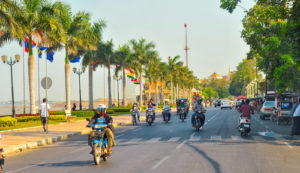
Visas
Most foreign visitors will need a visa, including infants and children (who pay full adult price) when entering Cambodia. The exception being that those from ASEAN countries can enter without a visa for between 14 and 30 days depending on the country.
Citizens of most countries can obtain a visa-on-arrival (VOA) for a fee of $30, but those from Afghanistan, Algeria, Saudi Arabia, Bangladesh, Iran, Iraq, Nigeria, Pakistan, Sri Lanka, or Sudan, must apply in advance at the Cambodian embassy in their home country.
In applying for a visa, you will need:
- A passport that is valid for at least six months and has at least one blank page
- A passport-size photo
- $30 in undamaged, clean notes
NB – If you arrive at immigration without USD you should be able to get some from any airport ATM
You can apply for a VOA at all international airports and almost all land border crossings from either Vietnam, Laos or Thailand. However, at a land border crossing to Cambodia, you can expect to pay between $5 and $20 in “fees” for the VOA privilege. The tourist visa is for a single entry only but can be renewed once for an additional 30 days for a fee of $45. If you are considering staying in Cambodia for more than 2 months, you will need to apply for an E-class visa when you arrive. This is also valid for 30 days and costs $35. The difference between the ordinary visa and the tourist visa being that the former can be extended indefinitely.
The ‘E-visa’ shouldn’t be confused with the ‘e-visa’. The e-visa is a tourist visa, which can only be obtained online. It’s only available to those who would be otherwise entitled to a VOA and costs $36. However, you can only enter Cambodia at either Siem Reap or Phnom Penh airports or Bavet, Poipet or Cham Yeam land border crossings. You can apply at Cambodian-visa.com, where a response time of at least 48 hours is advised. The government charge a $3 credit card processing fee on the transaction.
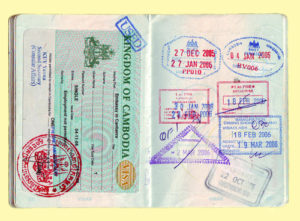
If you overstay your visa you will be fined $10 per day for up to 30 days, payable at immigration when leaving the country. After 30 days, overstayers are still liable for the $10 daily fee, but, depending on the length of overstay, risk imprisonment, deportation, and a future ban on entering the country.
Where to go/what to do – at a glance
The following are just some of the things you could do at Cambodia’s mainstay tourist destinations:
Phnom Penh
- Visit the Royal Palace
- Visit the harrowing Cheeng Ek Killing Field
- Visit Wat Phnom – Phnom Penh’s most eminent temple
- Explore the sites on a cyclo tour (pedal bike taxi)
- Visit Toul Sleng (S-21) Genocide Museum (ill-famed prison of the Khmer Rouge)
- Visit the National Museum
- Visit Phnom Tamao Wildlife Rescue Centre
- Take a sunset cruise on the Mekong River
- Take a bike trip around the Mekong Islands
- Shop at the famed Central/Russian Markets
- Take a stroll along Preah Sisowath Quay
Siem Reap (For Angkor Wat)
- Visit Angkor Wat (1 to 3 day passes available)
- Visit the Cambodia Land Mine Museum and Relief Centre
- Visit the renowned Banteay Srei temple
- Take a bike tour
- Take Khmer cooking classes
- Visit the Butterfly Centre
- Visit the Ceramic Centre – make your own jewellery
Sihanoukville and the islands
- Go snorkelling/scuba diving
- Try your hand at paragliding, windsurfing, kayaking etc.
- Go island hopping
- Go to a full moon party
- Chill out on pristine, white-sand, island beaches
- Visit the serene Kbal Chhay Waterfall
- Take Khmer cooking classes
- Shop at the local night/weekend markets
- Visit a (Chinese) casino
- Have a day at the ‘Splash Party’ Waterpark
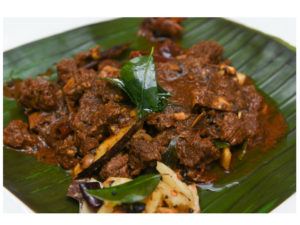
Battambang – Cambodia’s second city
- Visit the ‘Bat Caves’
- Visit a crocodile farm
- Ride on the Bamboo Train
- Visit the renowned Dumbong Statue
- Visit ancient temples e.g. Wat Banan, Wat Ek Phnom
- Explore the local Art Galleries
- See Phare Ponleu Selpak – a unique local circus
- Visit the locally famed Damrey Sor (White Elephant) Pagoda
Some things to do/not to do
- Be aware that Khmer society is quite conservative
- Dress conservatively, especially when visiting temples i.e. no shorts, short skirts, etc.
- Respect monks – give them space! It’s taboo for a female to touch a monk
- Remove shoes before entering both homes and business properties – unless told otherwise
- Be mindful of Cambodia’s recent turbulent past – talk of the KK etc. is still a touchy subject
- Best aware of Cambodia political situation – best not to bring up the subject
- Never touch a Cambodian person on the head, even children – it’s a Buddhist taboo!
- Don’t show the bottoms of (or point with) your feet – it’s a Buddhist taboo!
- Don’t point with your index finger – it’s considered rude!
- Don’t talk down Cambodia in front of local people – its often take as a great insult
- Don’t go to without adequate travel insurance – serious conditions may well need evacuation to Thailand
- Don’t wander off the beaten track without a guide, especially near the Vietnam border -there’s still buried active landmines
- Don’t get angry, in any situation – you only humiliate yourself in the eyes of locals
- Avoid illicit drugs – if you’re caught by the police, the consequences can be serious
.
.
